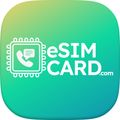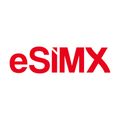手頃な予算で非常に便利なeSIM Cardは、オンラインのeSIMサービスプロバイダーです。200以上の国と地域をカバーしており、ローカル、リージョナル、グローバルのeSIMが利用可能です。1日だけの利用から1年間のプランまで、自分のニーズに合わせて選択が可能。お得なプランをぜひチェックして、旅行中の通信の悩みを一気に解決しましょう。

手頃な予算で非常に便利なeSIM Cardは、オンラインのeSIMサービスプロバイダーです。200以上の国と地域をカバーしており、ローカル、リージョナル、グローバルのeSIMが利用可能です。1日だけの利用から1年間のプランまで、自分のニーズに合わせて選択が可能。お得なプランをぜひチェックして、旅行中の通信の悩みを一気に解決しましょう。
プロモコード
チェコ向けeSIMCard eSIMデータプラン
よくある質問
eSIMCardはチェコ向けに無制限データeSIMを提供していますか?
eSIMCardではチェコ向けに「Unlimited」と呼ばれるプランは存在しますが、実際にはデータ容量に1 GBまたは2 GBの上限が設けられており、超過すると速度が512 kbpsや2000 kbpsに制限されます。つまり、無制限で高速データを利用できるプランは提供されていません。
大型データプランとしては、例として「200GB, 31 days, Europe, Unthrottled」(価格 $56.47 USD)や「100GB, 31 days, Europe, Unthrottled」(価格 $37.63 USD)があります。これらはデータ容量に上限があるものの、過度の速度制限はなく、一般的な使用量に対してコストパフォーマンスが高い選択肢です。高いデータ使用が必要な場合は、さらに90 days・100GBのプラン($191.83 USD)や180 days・100GB($185.68 USD)も検討できます。
eSIMCardはチェコ向けに電話番号やSMS付きeSIMプランを提供していますか?
eSIMCardはチェコ向けに電話番号付きやSMS機能付きのeSIMプランを提供していません。
代わりにデータ通信専用のeSIMプランのみを取り扱っています。
LINEやFacebook Messenger、iMessageなどの一般的なVoIPアプリはデータ通信で動作するため、電話番号やSMS機能がなくても通話やメッセージの利用は可能です。
eSIMCardはチェコ向けにいくつのデータプランを提供していますか?
eSIMCardはチェコの国別カバレッジで35のデータプランを提供し、チェコを含む複数国を同時に利用できる56のプランも用意しています。これらのプランは定量データプラン(1GBから200GBまで)と1日あたりのデータ上限付きプラン(例:24プラン)を含み、価格帯は約$1.64から$430.64、データ容量は1GBから200GB、有効期間は1日から365日となっています。
Summarized by Gen AI. Last updated:




